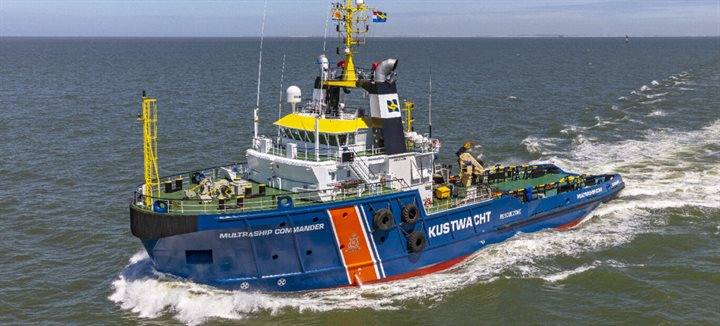Crisis Organisation
A sinking ship, environmental pollution or a collision: these are examples of possible incidents on the North Sea. Crisis Coordination for the North Sea is the forum for parties such as Rijkswaterstaat and the Coast Guard to work together to prevent and resolve incidents and crisis situations. The aim of crisis coordination is to keep the risks to which shipping and the wind farms, among others, are exposed as slight as possible. This also means taking into account the possible consequences of the many wind farm zones on the North Sea in terms of incident management and disaster relief. Is crisis coordination properly prepared for this, not least now that more wind farms are being added?

Exploration of the impact
In March 2022, an exploration was carried out into the impact of wind farm zones on the crisis coordination set-up, from operational to strategic level. This revealed that two issues play an important role: plan formation, and educational programmes, training courses and exercises (OTO in Dutch).
Consequences for incident response
To be properly prepared it is important to understand what the consequences for the configuration of wind farms in relation to incident response are. For instance, what does this mean for SAR (search and rescue) operations, fire fighting, oil spill clear up and the use of emergency response towing vessels (ERTVs)? Monitoring helps to discover answers: following what vessels do in and around wind farms and establishing where and how often incidents occur. Knowledge of the area is also essential to a good incident response. In other words, how are the wind farms configured spatially? Is there, for instance, a corridor or passageway for shipping, does the wind farm offer shared use, such as mussel aquaculture or the generation of solar energy? This knowledge is important to the crisis coordination set-up in order to properly prepare and implement planning and OTO.
'SAR far out to sea' study
As wind farms are being built further and further away from the coast, we need to gain knowledge on the impact of this on search and rescue operations far out to sea. For that reason the 'SAR far out to sea' study (SAR ver op zee) was started up in 2023 to explore the options for improving the use of SAR in and around the wind farms, particularly far out to sea. At the end of 2023 the report SAR ver op zee was published.
'Towing Assistance Team' study
Incidents such as that with the vessel Julietta D have made clear how important it is to establish a towing connection as quickly as possible. Rapid action can make the difference between a narrow escape or damage to a wind farm. For that reason, an investigation has been started into the use and necessity of a 'Towing Assistance Team' on permanent stand by. The idea is that this team can be dropped off at vessels in need of an emergency response at short notice to create a towing connection. A crew cannot always manage that on its own: there may be issues with language barriers, lack of knowledge or capacity.
'Self-sufficiency for shared use in wind farms' study
A study is also being carried out into the self-sufficiency of people who work on the shared use installations in wind farms. Shared use refers to the extra activities in wind farm zones, such as the generation of solar energy and the cultivation of oysters and seaweed. The results of the study are scheduled to be delivered in the fourth quarter of 2023.
Study into the use and necessity of sensors (RDF/CCTV)
What uses can Radio Direction Finders and CCTV (smart cameras) be put to in wind farms? Sensors and smart cameras could well be of beneficial value to crisis coordination, particularly where SAR is concerned. What that beneficial value is precisely is the subject of a study that is currently under way. The results of the study are expected in the second quarter of 2024.